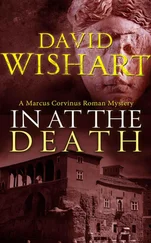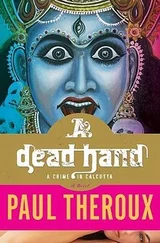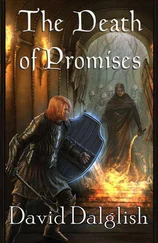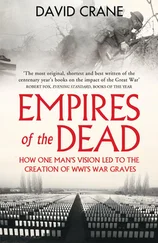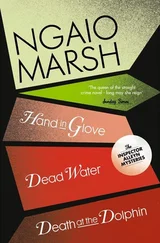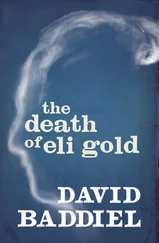11 Domaradsky, p. 151. The open decree was April 19, 1974. A separate secret decree May 21, 1974, established the microbiology institute at Obolensk, and the founding decree for the institute at Koltsovo came Aug. 2, 1974.
12 Alibek, p. 41.
13 “Iz vystupleniya predstavitelya SSSR v Komitete po razoruzhenniu A. A. Roshchina 12 iyunia 1975g” [From the appearance of the representative of the USSR at the Conference on Disarmament], Katayev, Hoover.
14 William Beecher, “Soviets Feared Violating Germ Weapons Ban,” Boston Globe , Sept. 28, 1975, p. 1. Beecher identified facilities in Sverdlovsk, Zagorsk and Omutninsk. These were part of the older military system, not the concealed Biopreparat facilities.
15 Robert A. Wampler and Thomas S. Blanton, eds., “U.S. Intelligence on the Deadliest Modern Outbreak,” TNSA, EBB No. 61, doc. 1. Posev , a Russian émigré journal, published an article in October 1979 about a germ warfare accident, but identified the wrong city, saying it was in Novosibirsk.
16 Associated Press, March 21, 1980.
17 David K. Willis, “Soviets: U.S. Double-crossed Us on Germ Warfare Charges,” Christian Science Monitor , March 28, 1980, p. 10. When the public statement was made, Willis reported, “The Soviets were furious. First they had been approached in private, and now it was around the world.”
18 TNSA EBB No. 61, doc. 10. Willis reported the Soviets issued three separate public statements March 19–20.
19 Jeanne Guillemin, Anthrax: The Investigation of a Deadly Outbreak (Berkeley: University of California Press, 1999), p. 8. Israelyan admitted it was a fabrication. Victor Israelyan, On the Battlefields of the Cold War: A Soviet Ambassador’s Confession (University Park, Pa.: Pennsylvania State University Press, 2003), p. 315.
20 Final Declaration of the First Review Conference, March 21, 1980.
21 TNSA EBB No. 61, doc. 10. The message may have been written imprecisely. An outbreak of inhalation anthrax might be expected to have fast impact, while contaminated meat could be prolonged because of transport and storage. But the larger point was that the United States believed it had been inhalation anthrax.
22 Meselson, “Memorandum to files regarding Sverdlovsk,” 1980, 7 pages, courtesy Meselson archive. Meselson, interview, Sept. 18, 2008. Meselson worked alone with Hoptman, but his analysis was fed into a government working group. After several months of examining the intelligence, the group concluded there had been an accidental release at the Sverdlovsk facility that caused an emission of anthrax spores and resulted in the first wave of deaths, possibly followed by a second wave caused by contaminated meat that was purchased on the black market. Leslie H. Gelb, “Keeping an Eye on Russia,” The New York Times Magazine , Nov. 29, 1981. Also see Guillemin, p. 9.
23 Alibek, Ch. 5 and 8.
24 He was known then as Kanatjan Alibekov. He changed his name to Ken Alibek years later upon arrival in the United States.
25 Alibek, p. 53.
26 Alibek said 836 was a code number for a natural strain of anthrax that the Soviets had found in Kirov in the 1950s. Alibek, interview, June 18, 2007.
27 Roger Roffey, Kristina S. Westerdahl, Conversion of Former Biological Weapons Facilities in Kazakhstan, A Visit to Stepnogorsk, July 2000 , Swedish Defense Research Agency, May 2001. Report No. FOI-R-0082-SE, based on a conference held in Stepnogorsk, July 24–26, 2000. Also, Gulbarshyn Bozheyeva, Yerlan Kunakbayev and Dastan Yeleukenov, Former Soviet Biological Weapons Facilities in Kazakhstan: Past, Present, and Future , Occasional Paper No. 1, Center for Nonproliferation Studies, Monterey Institute of International Studies, June 1999.
28 Alibek says overall the Soviet capacity was five thousand tons a year, but the actual military mobilization plans were less. A plant in Kurgan was to make one thousand tons, Penza five hundred tons and Stepnogorsk three hundred tons, for a total of eighteen hundred a year.
1 Mikhail Gorbachev, Memoirs (New York: Doubleday, 1996), p. 152.
2 Angus Roxburgh, The Second Russian Revolution (London: BBC Books, 1991), p. 17; and Archie Brown, The Gorbachev Factor (Oxford: Oxford University Press, 1996), pp. 67–68. By Volsky’s account, Andropov flew into a rage at the deletion, and Gorbachev was sent to calm him down. Gorbachev claimed in his memoirs that neither Chernenko, Andropov nor Volsky ever talked to him about it.
3 Margaret Thatcher, The Downing Street Years (New York: HarperCollins, 1993), p. 458.
4 Don Oberdorfer, From the Cold War to a New Era (Baltimore: Johns Hopkins University Press, 1998), p. 80.
5 Gorbachev, p. 155.
6 Anatoly Chernyaev, My Six Years with Gorbachev (University Park, Pa.: University of Pennsylvania Press, 2000), p. 8.
7 Valery E. Yarynich, C 3: Nuclear Command, Control Cooperation (Washington: Center for Defense Information, 2003), pp. 140–141; and Yarynich interviews and correspondence, 1998–2009.
8 Yarynich, pp. 142–145.
9 Yarynich, p. 146.
10 TV Center, Moscow, revealed the “Grot” code name, long a secret, in a broadcast Oct. 10, 2008. Also see GlobalSecurity.org. Bruce Blair, president of the Center for Defense Information, wrote in the Washington Post on May 25, 2003, that at Kosvinsky, Russian commanders can communicate to strategic forces using very-low-frequency (VLF) radio signals. He added, “The facility is the critical link to Russia’s ‘dead hand’ communications network, designed to ensure semi-automatic retaliation to a decapitating strike.”
11 The decision was dated August 30, 1974, according to a history of Yuzhnoye, S. N. Konyukhov, ed., “Prizvany vremenem: Rakety i kosmicheskiye apparaty konstruktorskogo buro ‘Yuzhnoye’” [Called up for service by the time: Missiles and spacecraft of the “Yuzhnoye” Design Bureau] (Dnepropetrovsk, Ukraine: ART-PRESS, 2004).
12 A document from the Katayev archive dated February 1982 confirms that the system was under construction then but not yet tested. The Katayev records also show six SS-17 missiles brought on duty in 1984 as Perimeter. See Podvig, “The Window of Vulnerability That Wasn’t,” International Security , vol. 3, no. 1, Summer 2008.
13 Further confirmation of plans for a fully automatic retaliatory system is contained in an internal Soviet defense document in Katayev, Hoover. Oleg Belyakov, who worked in Katayev’s department, complained in a 1985 memo that not enough attention had been paid “to a proposal, extremely important from the military and political point of view, to create a fully-automated retaliatory strike system that would be activated from the top command levels in a moment of crisis (with a notification to the adversary).” The comment about a “super-project” is from Katayev, Some Facts . Hines quotes Viktor M. Surikov, who had spent thirty years in building, designing and testing missiles, as saying the Dead Hand was designed by his team and approved by the Central Committee, but a fully automatic system was later rejected by Marshal Sergei Akhromeyev, chief of the General Staff. Hines et al., Soviet Intentions 1965–1985 , BDM Federal Inc., vol. 2, pp. 134–135.
14 This description is from Yarynich interviews with the author, as well as C 3 , p. 156; Korobushin interview, Hines, vol. 2, p. 107; Bruce Blair, Global Zero Alert for Nuclear Forces , Brookings Occasional Papers (Washington: Brookings Institution, 1995), pp. 43–56.
15 The United States was the chief adversary, but Western European or other targets might also have been included. China had a relatively small nuclear force.
Читать дальше

